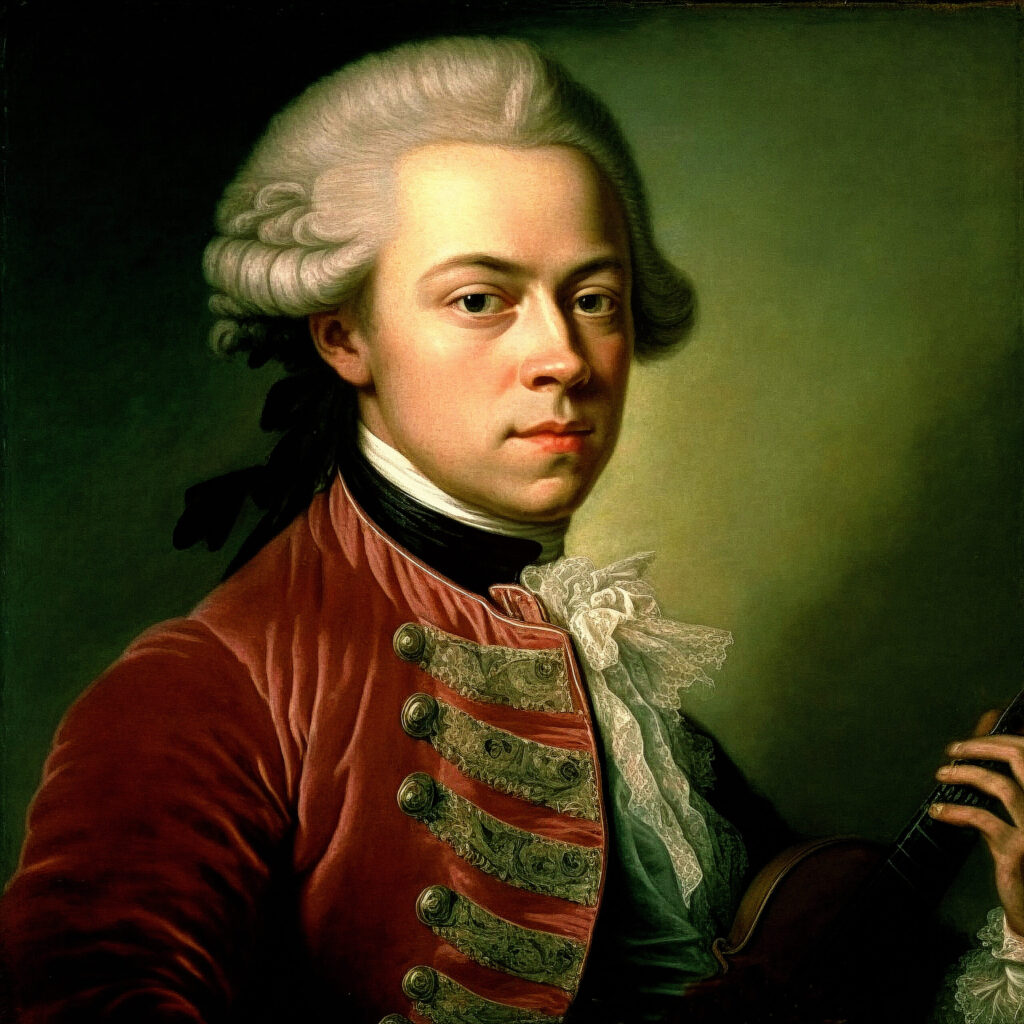Wolfgang Amadeus Mozart’s Lacrimosa stands as one of the most hauntingly beautiful pieces of music ever composed. It is the eighth movement of his Requiem Mass in D minor, K. 626, and is shrouded in mystery, as it was left incomplete at the time of his death in 1791. Despite its brevity, the Lacrimosa encapsulates profound sorrow and spiritual yearning, leaving an indelible mark on listeners and cementing its place in the canon of sacred music.
The Context of the Requiem and Mozart’s Final Days
The Requiem Mass in D minor was commissioned anonymously in 1791 by Count Franz von Walsegg, who intended to pass it off as his own composition to honor his late wife. By this time, Mozart was gravely ill, likely suffering from a combination of exhaustion, malnutrition, and disease. He would not live to complete the work, leaving much of it in sketches.
The Lacrimosa, which translates to “weeping” or “tearful,” was particularly unfinished; only the first eight bars were composed by Mozart. The remainder was completed by his student Franz Xaver Süssmayr, who used Mozart’s notes and sketches to piece together the rest of the movement, along with the entire Requiem.
A Closer Look at the Lacrimosa
The Lacrimosa is part of the Dies Irae sequence, a section of the Requiem that contemplates the Day of Judgment. Its text conveys the anguish of souls lamenting their sins and pleading for divine mercy. The Latin lyrics are as follows:
Text:
Lacrimosa dies illa,
Qua resurget ex favilla
Judicandus homo reus.
Huic ergo parce, Deus:
Pie Jesu Domine,
Dona eis requiem. Amen.
Translation:
Oh, how tearful that day
When from the ashes arises
The guilty man, to be judged.
Spare him, O God.
Merciful Lord Jesus,
Grant them eternal rest. Amen.
1. Musical Structure
The Lacrimosa begins with a gentle, weeping melody introduced by the strings, immediately setting a tone of deep sorrow. The vocal lines enter in a rising and falling motion, mimicking the ebb and flow of tears. Mozart’s genius is evident in how he uses harmonic shifts and dynamics to evoke a sense of both despair and hope.
The opening bars composed by Mozart are considered a perfect encapsulation of grief. The choral parts, layered over a somber orchestral accompaniment, create a sense of collective mourning. When Süssmayr took over, he preserved this emotional intensity, though some critics argue that the remainder lacks the same divine touch as Mozart’s original sketch.
2. Emotional Depth
The Lacrimosa is characterized by its ability to convey universal emotions. Through its mournful melodies and harmonies, it speaks directly to the human experience of loss, regret, and the yearning for redemption. It is both deeply personal and grandly spiritual, inviting listeners to reflect on their own mortality and the hope for grace.
The Legacy of the Lacrimosa
A Universal Symbol of Grief
The Lacrimosa has transcended its origins as part of a liturgical work to become a universal symbol of grief and mourning. It is frequently performed at funerals, memorials, and other solemn occasions. Its evocative power has made it a staple of classical music repertoire, resonating with audiences across cultures and generations.
Influence on Modern Media
Mozart’s Lacrimosa has found its way into modern popular culture, appearing in films, television, and even video games. Notable examples include its use in Amadeus (1984), a film that dramatizes Mozart’s life and the creation of the Requiem. The piece’s dramatic and emotional impact has also made it a favorite for cinematic moments depicting tragedy or divine reckoning.
Interpretative Debates
Because the Lacrimosa was incomplete at Mozart’s death, its performance often raises questions about authenticity. Scholars and musicians continue to debate the merits of Süssmayr’s contributions, with some preferring alternative completions by other composers. Despite these debates, the movement remains one of the most beloved parts of the Requiem.
Why the Lacrimosa Endures
The enduring power of the Lacrimosa lies in its ability to transcend time and place, speaking to the human condition with unparalleled eloquence. Its haunting beauty captures the fragility of life, the weight of sorrow, and the hope for transcendence. Whether heard in a cathedral or on a film soundtrack, the Lacrimosa continues to move listeners, reminding us of Mozart’s unparalleled gift for expressing the inexpressible.
Mozart’s Lacrimosa is more than a piece of music—it is an emotional journey, a spiritual reflection, and a testament to the power of art to endure beyond its creator’s lifetime. Though left unfinished, it carries the weight of Mozart’s genius and the collaborative effort to honor his vision.
Through the Lacrimosa, Mozart invites us to confront our mortality and to find solace in the beauty of music—a solace that has resonated for over two centuries and will undoubtedly continue to do so for generations to come.
No comments yet.







